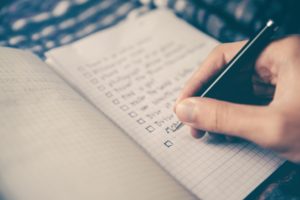In my first post, I wrote about beginning my prepping journey by doing a risk assessment and making a plan. It strikes me as the most important place to begin. But as I started to go down this path, I realized that it’s a lot more complicated thank I may have first realized.
My initial research seemed to suggest that prepping was mostly concerned with disasters. Some of the more hardcore preppers spend their time thinking about and preparing for ‘the end of the world as we know it’ (TEOTWAWKI) or what they refer to as a SHTF event (that acronym stands for shit hits the fan, in case you aren’t familiar.)
So I started planning by focusing on disaster preparedness. Using the Red Cross information mentioned in a previous post about creating a plan, I started with the disasters most common to where we live and the generic ones everyone needs to be concerned with.
But Wait, There’s More…
As I started assessing our risks and drawing up plans, I realized that ever plan seemed to require the purchase of something.
The fire safety plan included equipment we didn’t yet have. The same for the tornado and severe thunderstorm plans, the extended blackout plan, the home security plan, and so on.
It would seem that an important aspect to prepping is having enough money to buy the stuff you need. That means I need to budget for this. But that wasn’t even the biggest ah-ha to come from this.
I Need A Financial Plan
For quite a few years now I’ve had a retirement financial plan. I haven’t always been the best at sticking to it, but it’s been there.
However, I haven’t had a plan in place in case of a financial emergency.
You never know when you could lose your job. You can’t predict when the hot water heater is going to go, or when a tree is going to fall on your car, or when you’re going to end up in the hospital. If you don’t prepare, these kind of events could be financially devastating.
In my career I’ve been lucky. I’ve rarely found myself unintentionally without a job, and when it’s happened, I’ve always found something fairly quickly, so this isn’t something I worry about regularly. But recent events have really shown me how quickly things can go bad, and the fact is, you just never know.
Back in February, no one could have predicted that we’d be where we are now. Most of the people who have lost jobs, and those who’ve lost otherwise successful businesses that were providing some of those jobs, probably didn’t see it coming until it was too late. The whole idea behind prepping is that you aren’t waiting until it’s too late.
The Plans Are Coming
So, I’m still working on the details of most of our plans, but I plan to begin posting these plans here as I complete them. I believe I’m closest to finishing the fire safety plan, so that will probably come first, with the others to follow.
There are also some plans that are not event driven. Most of these seem like they become part of the other plans, but they can be detailed enough that they’re worth bringing up on their own. These are things like the financial plan I mentioned above, or a long term food storage plan.
All of these should be posted here within the next few weeks. If you have any suggestions about plans I may be missing or other ideas you want to share, please let me know in the comments below.
